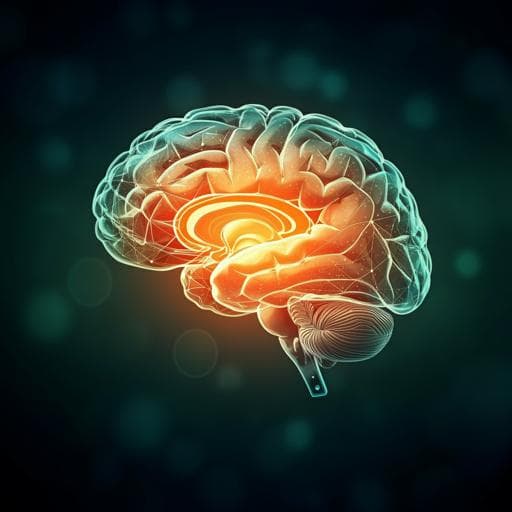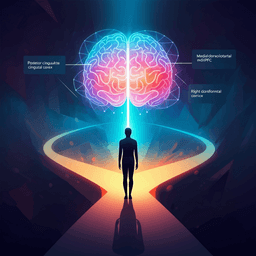
Medicine and Health
Event-related brain response to visual cues in individuals with Internet gaming disorder: relevance to attentional bias and decision-making
B. Kim, J. Lee, et al.
This groundbreaking study by Bo-Mi Kim and colleagues uncovers the neural markers linked to attentional bias in Internet Gaming Disorder (IGD). The research reveals that IGD participants exhibit heightened emotional responses to game-related cues, alongside noticeable decision-making challenges. Delve into the intricate relationship between gaming cues and social perception to better understand IGD's impact.
~3 min • Beginner • English
Introduction
The study examines whether individuals with Internet gaming disorder (IGD) show heightened attentional bias and craving to gaming cues, indexed by the late positive potential (LPP), and whether LPP relates to decision-making ability. IGD has gained recognition in DSM-5 and ICD-11 as a disorder needing further study. Contemporary addiction theories (e.g., incentive sensitization) posit that repeated engagement sensitizes mesolimbic pathways, conferring incentive salience to addiction-related cues, driving craving and approach behavior. Attentional bias reflects this process and can be indexed by LPP, an ERP component maximal over centro-parietal sites between roughly 300–700 ms that increases for emotionally salient cues. Prior work has shown increased LPP to drug cues and in IGD. Craving and emotional evaluation processes can bias decisions toward short-term rewards, suggesting a link between cue-reactivity and decision-making deficits observed in IGD. Accordingly, the authors hypothesized that IGD would show increased LPP to game cues, distinct LPP source activity in attention/visual/emotion networks, and impaired decision-making, with associations between LPP and Cambridge Gambling Task (CGT) performance.
Literature Review
- Incentive-sensitization theory suggests repeated drug/behavioral use increases incentive salience to conditioned cues, producing craving and attentional capture; these mechanisms generalize to behavioral addictions including IGD.
- LPP is a robust electrophysiological index of emotional salience and attentional allocation, peaking over centro-parietal electrodes 300–700 ms post-stimulus, and is enhanced by drug-related cues (cocaine, alcohol, nicotine) and has been reported elevated in IGD.
- Cue reactivity encompasses memory, expectancy, attentional bias, emotional arousal, motivational activation, and decision-making processes; LPP has been linked to subjective evaluation, motivational systems, and decision-making.
- Putative neural generators of LPP include frontal, occipital, temporal, and parietal regions, but precise sources remain uncertain, particularly in IGD.
- Craving regulation overlaps with emotion regulation circuits (dorsolateral prefrontal cortex, inferior frontal gyrus, dorsal anterior cingulate), and craving can bias decisions toward immediate rewards. IGD is characterized by compulsive, uncontrolled gaming despite negative consequences and documented decision-making deficits.
Methodology
Design: Cross-sectional case–control ERP study with source localization and neurocognitive assessment.
Participants: 40 patients with IGD and 39 healthy controls (HC). Recruited from SMG-SNU Boramae Medical Center addiction outpatient clinic and internet advertisements (April 2015–February 2019). IGD diagnosed via DSM-5 criteria by experienced psychiatrist. Of 62 IGD recruits, excluded those with comorbid psychiatric disorders (depressive disorder n=11; anxiety disorder n=9; intellectual disability n=2), leaving 40 medication-naive IGD patients. HC played internet games <2 h/day and had no psychiatric history (Mini-International Neuropsychiatric Interview). Exclusions: lifetime substance abuse/dependence (except nicotine), neurological disorders, significant head injury with LOC, medical illnesses with cognitive sequelae, sensory impairment, and IQ <70. IQ measured with abbreviated Korean-WAIS. Internet addiction severity: Young’s Internet Addiction Test (Y-IAT). Depression: Beck Depression Inventory (BDI-II). Anxiety: Beck Anxiety Inventory (BAI). Ethical approval obtained; informed consent provided.
Cue-reactivity task: Visual stimuli comprised game-related images (in-game captures from League of Legends, FIFA, Sudden Attack) and neutral images from IAPS. Each category had 7 pictures; pseudo-randomized series repeated 6 times. Stimulus duration 3000 ms; inter-stimulus interval 2000 ms. Stimuli matched for size (1024×768 pixels, 361×271 mm, 72 dpi), luminance, brightness, and color. Post-EEG, participants rated arousal, valence, and craving (VAS 1–10) for game-related and neutral stimuli.
EEG acquisition: Neuroscan 64-channel SynAmps with 64-channel Quick-Cap (modified 10–20 system). Mastoid references; ground between FPz and Fz. Sampling 1000 Hz; online filter 0.05–100 Hz. Vertical and horizontal EOG recorded for blink/eye movements. Electrode impedances <5 kΩ.
ERP preprocessing/analysis: Processed in Curry 7.0. Re-referenced to common average; ocular artifact reduction via Curry algorithm. Continuous EEG filtered 0.1–30 Hz. Epochs from −200 ms to +3000 ms relative to stimulus onset; baseline corrected to pre-stimulus interval. Trials with amplitudes exceeding ±100 μV rejected. Averages computed separately for game and neutral conditions. LPP quantified as mean amplitude 400–700 ms at centro-parietal (CP3, CP1, CPz, CP2, CP4) and parietal (P3, P1, Pz, P2, P4) sites.
Source localization: sLORETA used with a realistic head model (MNI152 template). Source space restricted to cortical gray matter (6238 voxels; 5×5×5 mm). Same LPP time window (400–700 ms) applied to estimate current density for each condition and group. sLORETA freeware used.
Decision-making task: Cambridge Gambling Task (CGT) measuring decision-making and risk-taking outside learning contexts. Outcomes: quality of decision-making (QDM; proportion choosing majority color), deliberation time, risk-taking (mean proportion bet when majority color chosen), overall proportion bet, risk adjustment, delay aversion. Analyses focused on QDM and risk-taking.
Statistics: Group comparisons of demographics, clinical variables, CGT, and ratings via one-way ANOVA or independent samples t-tests; chi-square for categorical data. Cue effects on LPP via repeated-measures ANCOVA with within-subjects factors electrode (10 sites) and stimulus (Game, Neutral), and between-subjects factor Group (HC, IGD). Group comparisons of mean LPP amplitudes also via repeated-measures ANCOVA over the 10 sites. Partial correlations assessed associations between LPP and CGT QDM. Covariates: IQ, BDI, BAI in all ANCOVA and partial correlations. Normality checked with Shapiro–Wilk test. SPSS v21; alpha p<0.05.
Key Findings
- Sample characteristics: No significant differences in age, sex, or smoking status between groups. IGD showed fewer years of education (t(77)=2.77, p=0.007) and lower IQ (t(77)=6.55, p<0.001). IGD had higher Y-IAT (t(77)=-10.59, p<0.001), BDI (t(77)=8.03, p<0.001), and BAI (t(77)=-5.64, p<0.001). Gaming time higher in IGD on weekdays (t(77)=-7.92, p<0.001) and weekends (t(77)=-4.51, p<0.001).
- Subjective ratings: For game stimuli, IGD showed trend-level higher valence (p=0.07) and craving (p=0.07) versus HC; arousal not different. For neutral stimuli, no group differences in arousal/valence/craving.
- LPP amplitudes: Significant main effect of cue type on mean LPP amplitude (F(1,77)=4.47, p≤0.05) and cue-by-group interaction (F(1,77)=5.30, p≤0.05). No group effect for neutral IAPS LPP (F(1,77)=0.68, p=0.41). Game-related cues elicited higher LPP amplitudes in IGD than HC at CP3, CP1, and P3 electrode sites (means/SDs per Table 2 in paper). Assumptions of normality and homogeneity were met.
- sLORETA: For game cues, IGD showed significantly higher estimated current density in superior and middle temporal gyri relative to HC. IGD showed significantly lower current density in frontal regions and limbic areas (parahippocampal gyrus, uncus, posterior cingulate, cingulate gyrus), as well as cuneus, precuneus, inferior parietal lobule, angular gyrus, and inferior temporal gyrus.
- Decision-making (CGT): IGD had lower QDM than HC (t(77)=2.24, p=0.028), indicating impaired decision quality. Risk-taking did not differ (t(77)=-1.83, p=0.071).
- LPP–decision-making relationship: In HC, QDM negatively correlated with LPP amplitude at CP3 (r=-0.43, p<0.01), CP1 (r=-0.47, p<0.01), and P3 (r=-0.44, p<0.01), controlling for IQ, BDI, BAI. No significant correlations in IGD.
Discussion
Findings support that individuals with IGD display heightened attentional and emotional reactivity to game-related cues, indexed by increased LPP amplitudes specifically to gaming stimuli, consistent with incentive-sensitization and cue-reactivity models of addiction. Despite minimal subjective differences in arousal/valence/craving ratings, objective ERP measures captured significant group differences, underscoring LPP’s sensitivity to implicit emotional-motivational processes in IGD.
Source localization indicated hyperactivation of superior and middle temporal gyri for game cues in IGD, regions implicated in social perception, suggesting that gaming cues may be processed as socially salient stimuli for IGD. Concurrent hypoactivation across frontal and limbic regions (including cingulate and parahippocampal structures) and parietal/occipital association cortices suggests altered top-down control and contextual/emotional integration during cue processing.
IGD participants showed impaired quality of decision-making on the CGT. In healthy controls, lower LPP responses to game cues were associated with better decision quality, implying that reduced emotional salience to gaming cues supports more optimal decisions. This relationship was absent in IGD, indicating a decoupling between cue-reactivity and decision quality, potentially reflecting deficient regulatory control over cue-induced arousal in IGD. Together, the results link heightened neural cue-reactivity with decision-making deficits, addressing the study’s hypotheses and highlighting LPP as a neurophysiological marker of IGD-related attentional bias and impaired decision processes.
Conclusion
The study demonstrates that individuals with IGD exhibit increased LPP amplitudes to game-related cues and altered LPP source activity (hyperactivation in superior/middle temporal gyri; relative hypoactivation in frontal/limbic and parietal/occipital regions). IGD also shows reduced quality of decision-making, and only healthy controls display an inverse association between LPP magnitude and decision quality. These findings support LPP as an objective neurophysiological marker of attentional bias and emotional arousal to gaming cues in IGD and link cue-reactivity to decision-making deficits. Future research should: (1) examine longitudinally whether LPP predicts IGD onset, maintenance, and relapse; (2) test whether interventions (e.g., cue-exposure therapy, cognitive control training, neuromodulation) reduce LPP to game cues and improve decision-making; (3) expand source localization with multimodal imaging to refine neural circuitry; and (4) explore task contexts and individual differences (e.g., comorbidities, severity) that modulate the LPP–decision-making relationship.
Limitations
Related Publications
Explore these studies to deepen your understanding of the subject.







